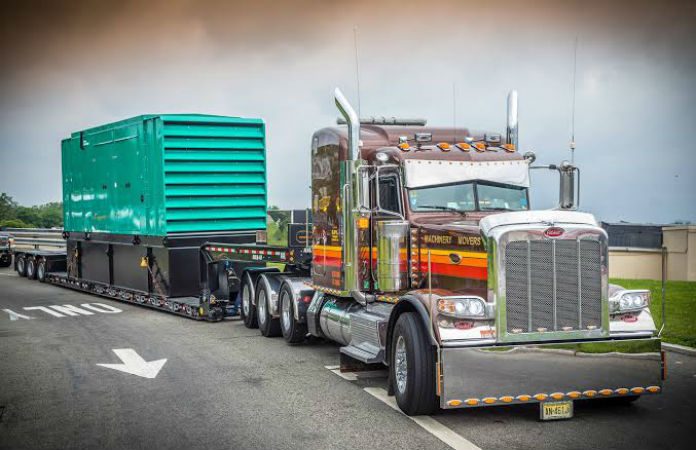When a global pandemic strikes, it tends to have long-term and far-reaching consequences. That was definitely the case with regard to the COVID-19 pandemic. It created worldwide disruptions and economic devastation for some industries.
The commercial truck industry was one of those sectors of industry that was hit hard by the pandemic. Its impact is still being felt in many ways, despite seeing the green shoots of recovery in certain aspects.
Supply chain problems ground to a halt as a result of so many restrictions imposed by the response to COVID-19. The availability of commercial truck parts has now returned to normal, but there are many aspects that still bear the scars of the pandemic.
Can we say that the commercial truck industry has truly recovered from COVID-19? Let’s look at some key points and observations to see where this sector currently stands in the recovery cycle.
What was the immediate impact of COVID-19 on the trucking industry?
When the pandemic first hit, the commercial trucking industry found itself at the center of a global crisis. The abrupt closure of factories, retail stores, and businesses worldwide caused a sudden drop in demand for many goods. This left the trucking sector scrambling to adapt as supply chains were thrown into disarray. Many trucking companies faced reduced loads, idle fleets, and damaging revenue losses.
Simultaneously, the demand for essential goods, like medical supplies, food, and household products, spiked. This led to an unexpected surge in long-haul trucking for certain sectors. However, this scenario created a highly uneven impact across the industry, with some companies struggling to survive while others were stretched thin trying to meet the sudden demand.
Labor shortages and driver health concerns were major challenges
One of the most significant challenges exacerbated by the pandemic was the ongoing labor shortage, particularly in the availability of truck drivers. COVID-19 intensified an already existing driver shortage. This was mainly due to many older drivers retiring early due to health concerns, while others left the workforce temporarily or permanently out of fear of contracting the virus. Travel restrictions, quarantines, and the lack of adequate health and safety protocols early in the pandemic also hampered driver availability, leading to a shortage of qualified drivers at a time when they were needed most.
This labor shortage created bottlenecks in the supply chain and increased the pressure on remaining drivers. Driver fatigue, burnout, and safety concerns became major issues during this period.
Analyzing the recovery process
As lockdowns eased and economies gradually reopened, the commercial trucking industry began its road to recovery. However, the recovery has been slow and uneven, with certain challenges continuing to persist long after the initial shock of the pandemic.
One of the most lingering effects of the pandemic on the trucking industry has been ongoing supply chain disruptions. Factories that were shuttered or operated at reduced capacity during the pandemic created a backlog in the production of goods, parts, and materials.
This delay continues to affect various industries, from automotive manufacturing to consumer electronics. This issue created unpredictable demand for freight services, which is a problem that persists today, to a certain extent.
The impact of rising costs and inflation
Another major challenge facing the trucking industry during the recovery has been the steep rise in operating costs, driven by inflation and supply shortages. The price of fuel, which is one of the largest expenses for trucking companies, has spiked at various points since the pandemic period.
In addition, shortages of vehicle parts, such as semiconductors and tires, helped drive up the cost of maintaining and repairing fleets. The cost of new and used trucks has also skyrocketed due to supply constraints and increased demand. This makes it difficult for companies to expand or replace aging fleets.
These rising costs have forced trucking companies to increase their rates, which in turn impacts the broader economy by raising the cost of goods for consumers. While demand for trucking services has recovered in many sectors, these cost pressures continue to create financial strain for companies, particularly small to medium-sized operators.
Has the trucking industry fully recovered?
While the trucking industry has made noticeable strides in adapting to the new post-pandemic landscape, it’s clear that a full recovery is still ongoing.
The driver shortage remains a critical issue for the trucking industry. The pandemic accelerated retirements and exits from the profession. On top of that, recruiting new drivers has proven to be a challenge. Many trucking companies continue to struggle to find and retain qualified drivers, which limits their capacity to meet rising demand.
To address this, companies are offering higher wages, signing bonuses, and better benefits, but these solutions have yet to fully close the gap. It is fair to say that the industry’s recovery is largely dependent on solving this labor crisis.
If there is a silver lining, it is the fact that the pandemic dramatically accelerated the growth of e-commerce. This is a trend that has had a profound impact on the trucking industry. As more consumers turned to online shopping, the demand for rapid delivery services surged. Numerous high-profile companies have had to expand their fleets and logistical operations to meet this increased demand.
It is believed that this shift in consumer behavior is likely to be permanent, which means the trucking industry will continue to play a vital role in supporting e-commerce.
In general terms, it would be reasonable to conclude that the commercial trucking industry is on the road to recovery, but it’s clear that the journey will be long and filled with numerous obstacles. While demand for trucking services has rebounded and the industry has adapted to new challenges, persistent labor shortages, rising costs, and ongoing supply chain disruptions remain significant hurdles.
Without doubt, the commercial truck industry has made progress in recovering from the COVID-19 pandemic, but a full recovery has not yet been realized. While demand for trucking services is strong, labor shortages, rising costs, and supply chain disruptions continue to pose challenges.
However, the future of commercial trucking remains hopeful, as the industry has proved to be resilient and adaptive to the challenges and changes imposed upon it.




























































